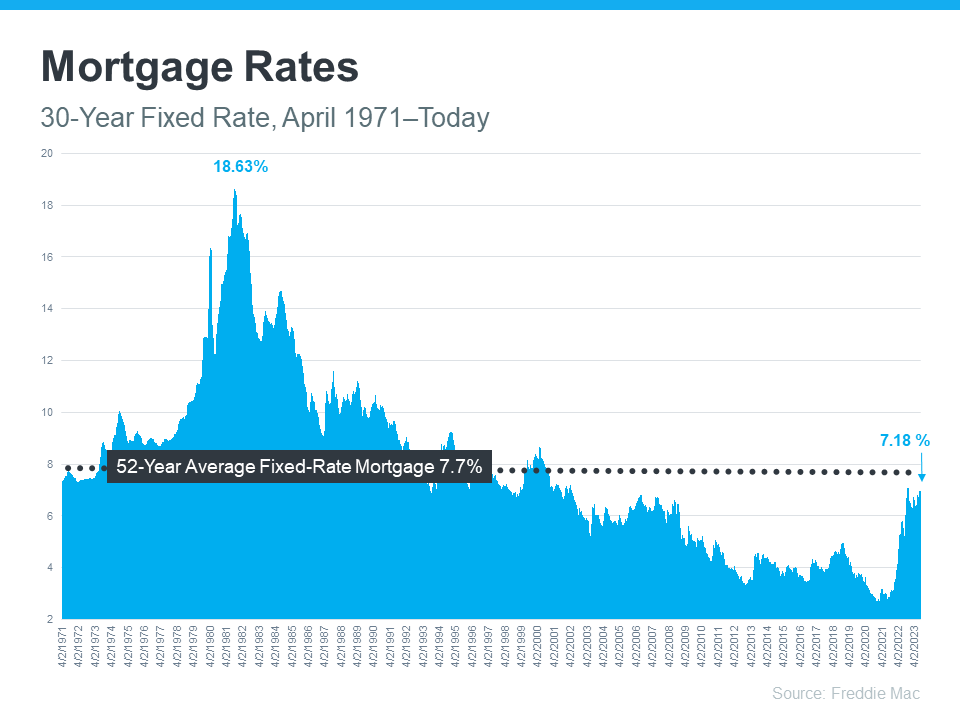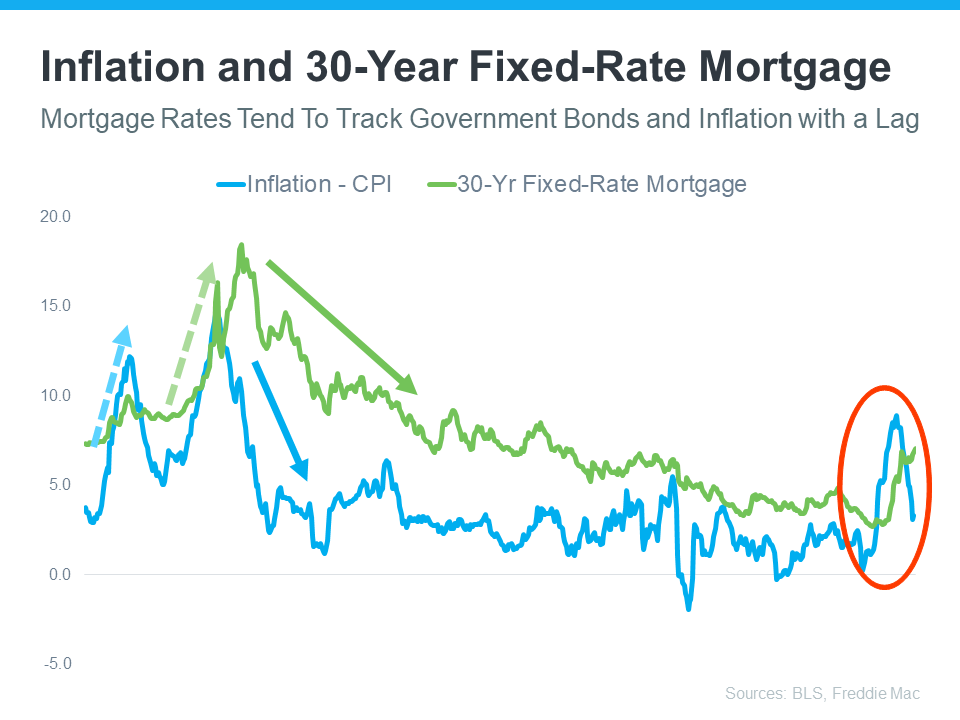September 20, 2023

If you’re hoping to buy a home this year, you’re likely to closely follow mortgage rates. Since mortgage rates impact what you can afford when applying for a home loan (and with rising rates affordability is a challenge today), it’s a good time to view the big picture of where mortgage rates have been historically as compared to where they are now. Beyond that, it’s important to understand their relationship with inflation for insights into where mortgage rates might go in the near future.
Giving Context to the Sticker Shock
Freddie Mac has been tracking the 30-year fixed mortgage rates since April of 1971. Every week, they release the results of their Primary Mortgage Market Survey, which averages mortgage application data from lenders across the country (see graph below):

Reviewing the right side of the graph, mortgage rates have increased significantly since the start of last year. But even with that rise, today’s rates are still below the 52-year average of 7.7%. While that historical perspective provides good context, buyers have become accustomed to mortgage rates between 3% and 5%, which is where they’ve been over the past 15 years.
That’s an important fact because it explains why the recent jump in rates might have you feeling some sticker shock despite current rates being quite close to their long-term average. While many buyers have adjusted to the elevated rates over the past year, a slightly lower rate would be a welcome reprieve. To determine if that’s even a realistic possibility, it’s important to consider inflation.
Where Could Mortgage Rates Go in the Future?
The Federal Reserve has been working hard to lower inflation since early 2022. That’s significant because, historically, there’s been a connection between inflation and mortgage rates (see graph below):

This graph shows a pretty reliable relationship between inflation and mortgage rates. Looking at the left side of the graph, each time inflation moves significantly (shown in blue), mortgage rates follow suit shortly after (shown in green).
The circled portion of the graph points out the most recent spike in inflation, with mortgage rates following closely behind. As inflation has moderated a bit this year, mortgage rates haven’t yet made a similar move.
That means, if history is any guide, the market is waiting for mortgage rates to follow inflation and head back down. It’s impossible to accurately predict where mortgage rates will go with certainty, but moderating inflation means mortgage rates going down in the near future would fit a well-established trend.
Bottom Line
To understand where mortgage rates may be heading, it’s helpful to look at where they’ve been in the past. There’s a clear connection between inflation and mortgage rates, and if that historical relationship holds true, the recent decline in inflation may mean good news for the future of mortgage rates and your homeownership goals. For more information on financing your next home, contact me for a reference to a reliable mortgage professional who can be trusted to ensure a successful next-home purchase.
Courtesy of: Keeping Current Matters.
